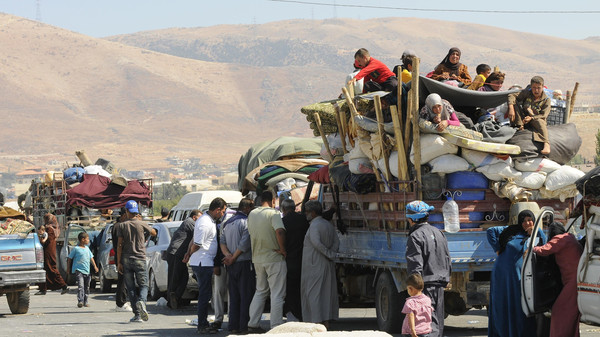
Close to four million Syrians are currently living in UN refugee camps, informal settlements, on the streets and in crowded apartments in those three countries, straining the resources of each.
But Michelle Cameron, Canada’s ambassador to Lebanon, said the eventual breakdown of how many refugees are selected from each of the countries will depend on one thing — who needs resettlement most.
It’s not a skilled worker immigration program, where technical points or quotas are in play, she said in an interview with The Canadian Press from Beirut.
“We have to let the files dictate,” she said.
“It’s the most vulnerable, who pass our medical screening, that pass our security screening, that want to be resettled.”
Cameron said she’d like to see between one-third and one-half of the total come from Lebanon.
Meanwhile, UN officials in Jordan had originally been working on a plan to submit 7,000 files from that country but that number could climb to 10,000.
Turkey currently hosts the highest number of Syrian refugees at about 2.2 million, but selection procedures there are more complex, as the Turkish government, not the UN, controls the process directly.
Beyond the UN, private groups are also working to identify and select refugees, whose files are then handed over to the Canadian government for review. Cameron said Beirut has a few thousand privately sponsored cases in their inventory.
She said she expects flights out of Lebanon to begin within the next two weeks, once there are enough files cleared to actually fill an entire plane. Most of these refugees are expected to be privately sponsored.
“This is really about protecting the most vulnerable.”
Among other things, she’s working with the Lebanese government to try and speed its side of the process, which involves reviewing files for potential domestic security issues before exit visas can be granted.
Lebanon currently hosts about 1.5 million Syrian refugees, overwhelming its population of about 4 million. In May, the country stopped registering new refugees altogether.
About 70 per cent of Syrians in Lebanon live below the poverty line. A survey in August revealed only one in five adults reported earning any money in the previous month and 94 per cent of families are in debt. Half the children aren’t in school and many have begun missing meals as their families can’t afford food.
There are no formal refugee camps and about a fifth of the displaced people live in informal settlements.
Cameron said she recently took a visitor to see one. As they walked away, her companion remarked on the smell of sewage and suggested it was coming from fertilizer in nearby farmers’ fields.
It wasn’t. Many of the settlements depend on international aid agencies to set up water and sanitation, and not all have access to them.
Between 15 and 50 families are in each settlement, Cameron said, living in shacks with muddy floors, the walls covered with plastic to keep out the rain and snow.
“Can you imagine living in that plywood box, covered in plastic, you have a few children and they look up at you and say ‘I’m hungry’?,”
“It’s difficult for the average Canadian to comprehend that kind of scenario. This is really about protecting the most vulnerable. Saving, if you will.”
Huffington Post
Leave a Reply
You must be logged in to post a comment.